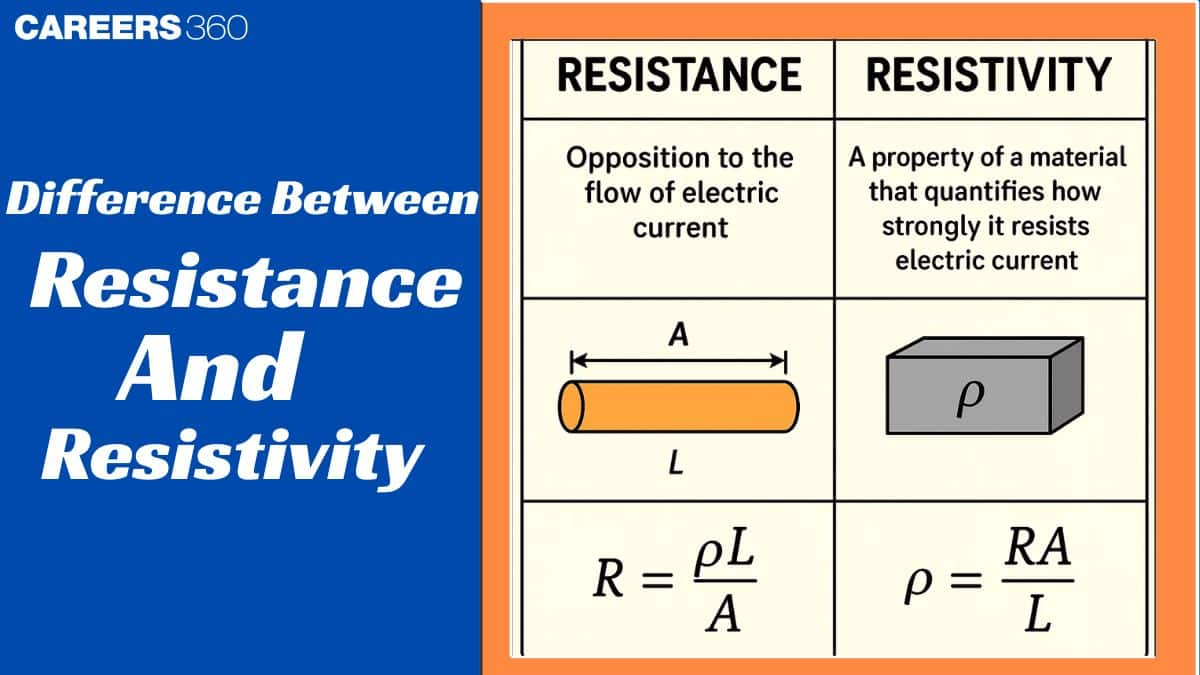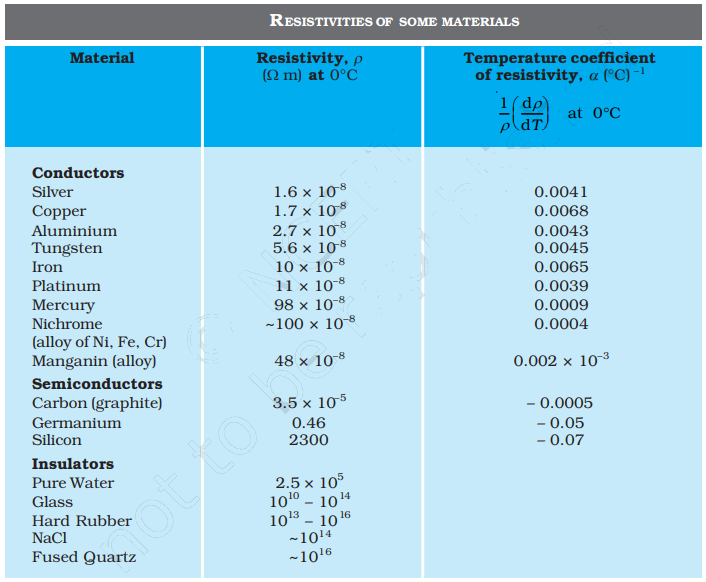Difference Between Resistance and Resistivity
Electricity has two very important terms-resistance and resistivity- these terms may sound very similar, but no similar meaning to one another. Resistance tells how much the material opposes the flow of the electric current, whereas resistivity is the property of the material itself that affects resistance. Both play an important role in how electricity flows through wires and circuits. This article will discuss what resistance and resistivity mean, the Difference between resistance and resistivity in physics.
This Story also Contains
- Resiatance
- Resistivity
- Difference Between Resistance and Resistivity

Resiatance
The resistance of a conductor is the opposition that the conductor offers to the flow of charge.
When a potential difference is applied across a conductor, free electrons get accelerated and collide with positive ions and their motion is thus opposed. This opposition offered by the ions is called the resistance of the conductor.
Resistance is the property of a conductor by virtue of which it opposes the flow of current in it
Resistance depends on:
- Length of the conductor $(R \propto \ell)$
- Area of the cross-section of the conductor $R \propto \frac{1}{A}$
- Nature of material of the conductor $(\rho)$
- Temperature $R_t=R_0(1+\alpha \Delta T)$ (as discussed in the previous concept)
Where,
$\mathrm{R}_{\mathrm{t}}=$ Resistance at temperature $\mathrm{T}^0 \mathrm{C}, \mathrm{R}_0=$ Resistance at $\mathrm{T}_o{ }^0 \mathrm{C}$
$\Delta \mathrm{T}=$ Change in temperature,
$\alpha=$ Temperature coefficient of resistance
Note: $\alpha$ is positive for metals and it is negative for semiconductors and insulators
The resistance of the conductor decreases linearly with a decrease in temperature and becomes zero at a specific temperature. This temperature is called the critical temperature. At this temperature, the conductor becomes a superconductor.
Resistivity
Electrical resistivity (also called specific electrical resistance) is a fundamental property of a material that measures how strongly it resists electric current. A low resistivity indicates a material that readily allows electric current.
Resistivity is commonly represented by the Greek letter ρ (rho).
The resistivities of various common materials are listed in the table given below.
- The materials are classified as conductors, semiconductors and insulators depending on their resistivities, in increasing order of their values.
- Metals have low resistivities in the range of 10–8 Ωm to 10–6 Ωm.
- At the other end are insulators like ceramic, rubber and plastics having resistivities 1018 times greater than metals or more.
- In between the two are the semiconductors. The resistivity of semiconductors decreases with a rise in temperature, unlike conductors. The resistivities of semiconductors are also affected by the presence of a small number of impurities. This last feature is exploited in the use of semiconductors for electronic devices
- The resistivities of various common materials are listed in the table given below. The materials are classified as conductors, semiconductors and insulators

Difference Between Resistance and Resistivity
The table below shows the Difference between resistance and resistivity in physics.
Resistance | Resistivity |
The physical property of a substance that opposes the flow of current, i.e. electrons, is called resistance. | Resistivity is a physical property of a certain substance that has specific dimensions. |
| Resistance is related to both length and temperature but is inversely proportional to the material's cross-sectional area. | The nature and temperature of a material's resistivity are only proportional to one another. |
| Temperature, Length, and Conductor Cross-Sectional Area Effect resistance | Temperature Effect on Resistivity |
| $\begin{aligned} & R=\rho(L / A) \\ & \rho=\text { Resistivity }\end{aligned}$ | $ |
| Denoted by R | Denoted by ρ |
| Ohms is the SI unit of resistance. | Ohm-meter is the SI unit for resistivity. |
| The resistance property is applied in a variety of applications, including heaters, fuses, and sensors. | For calcareous soil, electrical resistivity measurement is used as a quality control test. |
Also Check-
Frequently Asked Questions (FAQs)
Resistance is a measure of resistance to current passage in an electrical circuit. Furthermore, resistance occurs because the journey from one terminal to the next is not direct. Instead, an electron travels in a zigzag pattern. As a result, the electrons' mobility is hampered.
Resistivity is a basic measurement of an object's resistance to the conduction of electricity in a certain dimension. Additionally, items with lower resistivities will have less resistance to electric flow. High resistivity objects, on the other hand, are poor conductors.
The resistivity of a material, as well as its size and shape, influence its resistance.
Yes, when the resistivity of a thing increases, so does the resistance. The flow of charges in a conductor is opposed by resistance. Resistance is proportional to the conductor's length and area. The resistance is measured in ohms.
Temperature, wire length, cross-sectional area, and material nature are all factors that affect resistance. Free electrons move across conductive materials and occasionally clash with atoms when current flows through them. Temperature affects Resistivity.